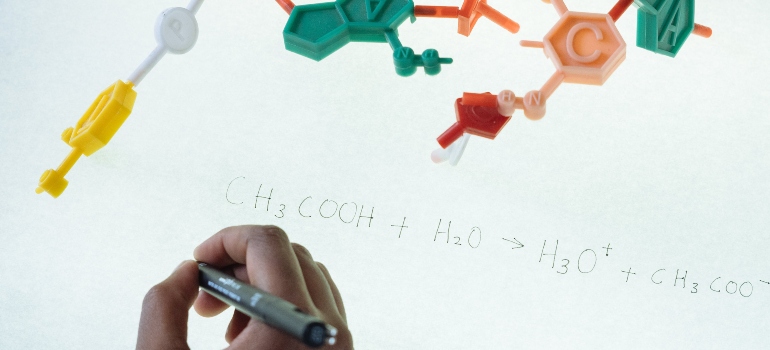What is Suboxone?
What is Suboxone? This question often arises among those looking for effective solutions for opioid addiction. Suboxone, a critical medication in addiction treatment, has transformed many lives. At its core, it combines buprenorphine and naloxone. This dual-action formula makes Suboxone a foundation in modern addiction therapy. Especially notable is its role in outpatient programs, like those offered at an addiction treatment center in Pennsylvania. Here, Suboxone plays an important role in personalized treatment plans. It allows patients to regain control over their lives, which makes a recovery journey easier.
Jump to Section
Composition and Formulation
Suboxone, a crucial medication sometimes used in drug rehab in Pennsylvania and beyond, combines two active ingredients: buprenorphine and naloxone. Buprenorphine, a partial opioid agonist, reduces cravings and withdrawal symptoms. This means increased doses do not enhance euphoria, making it safer. Naloxone, an opioid antagonist, adds a protective layer. It confronts opioid effects, especially in cases of misuse.

Suboxone’s formulation is easy to use and effective. It comes in sublingual films and tablets. These dissolve under the tongue and provide a quick absorption and onset of action. The film version, discreet and convenient, is a formulation many choose. It offers precise dosing, essential for effective treatment. Tablets, while similar in effect, provide an alternative for those with specific needs or preferences.
Each form of Suboxone is designed for gradual narrowing. This is critical in a carefully monitored recovery process. In drug rehab settings, like those in Pennsylvania, Suboxone’s adaptability supports personalized treatment plans. It is suitable for many stages of addiction, helping countless individuals on their journey to recovery. It stands out as a flare of hope, guiding many towards a healthier, substance-free life.
What to expect with Suboxone?
Again, Suboxone contains buprenorphine, a synthetic opioid, and naloxone, an opioid antagonist. Buprenorphine, developed in the late 1960s as a synthetic analog of thebaine, works as a partial opioid agonist. This means it activates opioid receptors in the brain but to a much lesser degree than full agonists like heroin or methadone. Notably, buprenorphine’s activation of opioid receptors has a ceiling effect, limiting the risk of euphoria and respiratory depression, common risks with full opioid agonists.
Naloxone, included in Suboxone, serves as a safety measure. It remains inactive when Suboxone is taken as prescribed (underneath the tongue). However, if individuals misuse Suboxone (for instance, by injection), naloxone becomes active, reversing the effects of opioids and potentially precipitating withdrawal. This combination discourages misuse of the medication.

However, like all medications, Suboxone comes with potential side effects and risks. Common side effects include constipation and headache. The most serious risk in treating opioid use disorder (OUD) with buprenorphine is the potential for opioid overdose, inherent in the disorder itself. Moreover, all opioids, including buprenorphine, carry the risk of addiction, particularly at higher doses. Therefore, it’s important to use Suboxone under medical supervision, following recommended dosages and treatment plans.
Dosage And Regulatory Aspects
The recommended dosage of Suboxone is individualized, as Pennsylvania opioid treatment programs confirm. Start low and adjust based on patient response. Medical supervision is a must during this process, especially considering the risks of dependency and withdrawal symptoms. The process of starting Suboxone includes an initial analysis, followed by careful dose adjustments. Decreasing the usage of the medication is equally sensitive and should be gradual to minimize withdrawal symptoms.
Legally, Suboxone falls under the control of various federal regulations. The Controlled Substances Act governs it, which regulates the manufacture, possession, and distribution of controlled substances, including those who use them in substance use disorder (SUD) treatments. Specifically, the oversight of medications like Suboxone that individuals use for opioid use disorder (OUD), has been transferred from the FDA to the Substance Abuse and Mental Health Services Administration (SAMHSA). SAMHSA’s Division of Pharmacologic Therapies (DPT), part of SAMHSA’s Center for Substance Abuse Treatment (CSAT), manages the day-to-day implementation of these regulations.
- Regulatory Framework: Regulations for Opioid Treatment Programs (OTPs), including those prescribing Suboxone, are detailed in the Certification of Opioid Treatment Programs, 42 Code of Federal Regulations (CFR) 8.
- Accreditation and Certification System: This framework provides an accreditation and certification system for OTPs, which the Substance Abuse and Mental Health Services Administration (SAMHSA) may oversee.
- Recognition of Opioid Use Disorder (OUD): The framework acknowledges that OUD is a medical disorder, necessitating varied treatment services tailored to individual patients at different stages.
- Multifaceted Approach: The system involves a collaborative approach, including roles for:
- State governments
- SAMHSA
- The Department of Health and Human Services (HHS)
- The Department of Justice (DOJ)
- The Drug Enforcement Administration (DEA)
Patient Confidentiality: Regulations include strict measures to protect patient confidentiality, particularly restricting the exposure and usage of patient records related to substance use treatment.
Controversies and Misconceptions
Utilized in inpatient drug rehab centers in Pennsylvania, Suboxone is surrounded by controversies and misconceptions. A common misconception is that Suboxone is simply a replacement for other opioids. This is not accurate. Suboxone’s one-of-a-kind formulation reduces opioid dependence but does not substitute it. It lessens withdrawal symptoms and cravings, facilitating recovery. Another misconception is that it’s easy to abuse Suboxone. Nevertheless, due to the presence of naloxone, which counteracts opioid effects when misused, Suboxone has a lower risk of abuse compared to other opioids.
One major controversy involves its role in long-term addiction treatment. Critics argue that long-term dependency on Suboxone merely replaces one addiction with another. Supporters, of course, emphasize its effectiveness in managing withdrawal and reducing relapse risks.
Some believe using Suboxone is not “true sobriety”. This stigma can discourage individuals from seeking the treatment they need. In reality, recovery is a personal journey, and medication-assisted treatment, like Suboxone, can be a crucial component for many.
Patient Experiences and Case Studies
Many participants in prescription drug addiction rehab expressed satisfaction with buprenorphine. They found it convenient and effective, reducing stigmatization and providing daily medication-assisted treatment for Opioid Dependence (MATOD). On the other hand, experiences varied regarding its ability to last throughout the dosing interval, and some reported feeling disconnected from healthcare services when starting depot buprenorphine.
A helping hand
Suboxone combination of buprenorphine and naloxone helps individuals on the path to recovery by reducing cravings and withdrawal symptoms. If you want to know what is Suboxone, simply, it is a crucial tool in the fight against opioid addiction, offering hope and support to those in need.